First Entry - How it all started back in January 2014 to Date
Not knowing how all this works here is the first entry into my experiences into Astronomy.
The Very Beginning
For years I've always been interested in the sky, the objects up there and much more like general and natural science to name but a few. I remember a very long long time ago at around the age of 12 I got a Tasco telescope for Christmas. It wasn't nothing special (under today's standards it is very poor), but it was mine. All it really got used for was some daytime viewing which wasn't the easiest of things on its wobbly mount. However with it came a lunar map and a map of the solar system covering the main planets etc. I think I spent more time looking at those two maps than actually using the telescope. When I moved from Suffolk to Cumbria back in 2012 I came across the envelope that contained the maps, still in excellent condition and decided to give these to my 8 year old daughter as she often has fleeting interests in this type of thing. The telescope is still about somewhere, hidden in a cupboard just like most of us hoarders do, just can't part with something. :smiley:
I remember the Solar Eclipse well that we had in 1998, where I made the trip from Suffolk to Cornwall for what I was hoping as the best viewing position. However on the day the clouds rolled in as the eclipse started. However they thinned enough to see the event and I remember vividly that when it reached totality, the whole place went silent. Nothing was heard until the sun broke out the other side. At that point the birds went deafening loud and people just packed up and cleared away as quickly as they could. Quite strange as there was still another 20 minutes or so of the eclipse.
Back in the early 2000's I remember when we had a planetary alignment. I had gained a copy of a piece of software called Red Shift 3 from the cover of a magazine. This was the equivalent to Stellarium that many people use today. It helped by pointing out where I should be looking for the planets. I think I managed to spot them all with the exception of Mercury. With it being so low in the sky I didn't have a very clear view where I lived with houses in the way on the other side of the road.
The Start Of The Real Interest and First Proper Telecsope
It was the Star Gazing Live on BBC2 in January 2014 that really hooked my interest. I had initially missed the first episode but did catch up on the iPlayer watching them all. Regular email hit my inbox from a certain High Street supplier and they were all with offers of Telescopes. Luckily this supplier accepted PayPal, where I had a small amount of funds to spend. After a bit of research, contact a local society and posting to a different forums site I didn't actually get any advice back on if what I was looking at was a good buy. So I decided I had researched as well as I could and decided to buy the Celestron Astromaster 130EQ, the one without the Motor Drive as that was an additional £40 and I could buy it on it's own for just over £30.
The new scope was delivered at work the week after Star Gazing Live and coincidentally it was the same day that the local Astronomy Society in Carlisle had an open evening. I took the scope home from work, had tea and quickly had it assembled. It was nice and easy to do as after the point of ordering it I had spent many hours on YouTube researching about the hobby and the scope I had ordered. Now do I think that I bought the wrong scope? Knowing what I do now the answer is probably. Do I regret buying the 130EQ? No. More will follow showing how I have got on with the scope and it may not be the most ideal but you can have lots of fun exploring and actually get quite a lot out of it.
Local Astronomy Society
The local Society had an open evening on the day my new scope arrived. So that night (where I had already enquired about it) both my daughter (10 years old) and I headed off to the open evening. The room was very small for the amount of people there, it was very friendly and we both enjoyed ourselves. Although from my intense watching of YouTube videos there was very little they spoke about that I hadn't learnt. It was a joy to meet like minded people who share the same hobby or at least have an interest in the hobby. It was nice to see their home made scope and we both ended up in the local paper. :cool: Leaving the evening their next meeting was to be held at the local nature reserve that had just received the dark skies which was only a 10 minute drive from where I live, where both my daughter and I were keen to go along.
At the next meeting it was a lovely clear night, most of the same people turned up from the open evening with the exception of one or two. It was at the time where the new Super Nova around M81 / M82 had just been discovered. They had the clubs refractor there and one member had their own scope too. Both had GoTo on them and we were shown some of the objects I had been observing that time, but best of all I was shown the Super Nova, where still today at writing this part of the blog I've been struggling to find at home on my own. The second part of the evening was a slideshow and talk on what we can expect to see. Another very enjoyable evening, again we both enjoyed and was looking forward to the next meeting.
The third meeting we attended was a talk on the Rosetta probe and Asteroids. The meeting started with their normal notices and things to look out for which was great as it highlighted some new things to be aware of, especially the Iridium Flares where all the information can be found at the http://www.heavens-above.com/ website. Again I had been reading up on the Rosetta probe prior to the meeting. The meeting really only touched on the probe and moved to asteroids. At the end we were handed around some Asteroid fragments that had been collected from various parts of the world, showing us how variable the actual content of the asteroids could actually be. Another most enjoyable evening, looking forward to the next one which is sometime after this blog entry.
Just checked the website and it looks like we missed the National Astronomy Week event at Watchtree Nature Reserve. Typical we were looking forward to attending that.
My Observations and Experiences January - Early March 2014
Setting the scope up for the first time was nice and easy, taking it outside and a very rough Polar alignment was made due to partial cloud cover. This seemed to be the theme for quite a few sessions as most of you will know the weather in the UK for the start of 2014 has not been good for this hobby.
With a long photographic background, getting used to using the EQ mount took two or three sessions. Especially having to spin the scope on the mounting rings to get the Eye Piece and Finder in a suitable orientation to use.
With Jupiter high in the sky it was the first object that I spotted. This was keenly observed by my daughter and myself. The wife and my wild 12 year old son also had a look and were suitably impressed, especially being able to see the four moons. Almost every session I have had since that first one, has always entailed a good look at Jupiter. It never fails to amaze me and I am always keen to look at it every time. Now it may be the conditions or it may be the quality of my scope, but I never see very much detail showing the atmosphere. Looking off to the edge does show flickers of detail at times.
I was quite impressed that within my first few sessions I managed to find the Orion Nebula M42 and Andromeda M31. Admittedly M31 did take me a few minutes to find in the scope, especially as I was still using the standard RDF, or should I say trying to use it. :rolleyes: Oh and how could I forget the moon. It has to be one of the objects that everyone notices and always had to take a look at, especially when you have a full moon and observing a lot of other objects is then limited.
With getting the bug it was already time to start trying to add to the standard equipment. Within a few days I had ordered a Rigel finder to replace the RDF and the Motor Drive to help with observing. Webcams, 2x Barlows and another EP were also added but I will go into the imaging further below. The Rigel has to be one of the best buys, it transformed the use of the scope making life so much easier. Even finding the bright Jupiter could take 30 seconds or so with using the RDF.
Somewhere in the middle of all that buying I also purchased a set of Olympus DPSI 10x50 binoculars. Now of any of the equipment I have these get used the most. They are practical for any break in the sky, can easily pick out many objects that cannot be seen by the eye and can be used in the daytime (which I still have to do). They are so ideal for hunting for a lot of objects in the sky. Where Andromeda takes me several minutes to find with the scope I can find it within a matter of seconds using the binoculars.
Of all the stock equipment that came with the scope, the 20mm EP is a real joy to use. A nice wide field of view and giving a nice low 32x magnification. With a nice wide opening and reasonable eye relief it is ideal for someone wearing glasses. The 10mm EP I have to say is pretty poor. It has a very narrow opening and was briefly getting used just to see Jupiter or the Moon with that little extra magnification.
After the first few sessions I was keen to start trying to find some more objects. Being new it isn't easy to know what to look for but I soon came across Pleiades M45 and that still has to be one of the brightest and enjoyable objects that I look forward to seeing. With browsing the forums daily someone posted an image of the Beehive Cluster M44. So I looked it up to where it was and found it very quickly.
I've tried to find Bode's Galaxy M81 and Cigar Galaxy M82 a couple of times now. The first time was before I bought the bins and just could find no trace of them and I knew where I should be looking. I tried again earlier this week and still unable to locate them with the scope, however I think that I did find them with the bins, but could not get the scope to the same location. I will say that just because I've tried a couple of times I certainly will not give up.
Imaging
With a strong photographic background from many years photography I have probably had a better understanding to the needs when it comes to Astro Photography. In all the years of doing photography if it was just for myself or a judge in a club competition, I've always had a battle compared to the best. Mainly by not having the equipment that other had. However this never stopped me as every now and then you always come up with an image that is as good as the rest you see. I had a vast range of equipment in the pre-digital days. Three 35mm cameras used for colour, slide and B&W films, plus a medium format camera which produced some nice large negatives. To top this off when you process your own B&W films and prints you get something that the modern digital age will never come close to.
It was 2003 when I got into the digital imaging with a Canon S45 compact digital camera. I made sure that I got a camera that allowed a lot of manual settings that you get with an SLR as the DSLR cameras were well out of my price range at that time. A few years later I then got the EOS 300D, where the main reason was because I have the EOS 300 film camera. So the controls are almost identical and all my lenses could be used with the DSLR.
So how do I go about bringing my Photographic skills to the Astronomy world. I have a scope that isn't suitable for DSO. During all my YouTube sessions I came across a video by Forest Tanaka which can be found here
However like anyone new with a scope when you first look through that EP you just want to try and capture an image of any sorts to show someone else. I did nothing but fail with mobiles, that's even with three different types I have to use. So I resorted to using the compact camera. The first image of the moon was just hand held to the EP. The second image of Jupiter was so much harder that I had to sit the camera on a tripod. This meant constant adjustments of the scope to track Jupiter and then constantly moving the camera to frame the image.
I'm sure many of you have done just what I did at the EP and were pleased with your results you got.
My first proper subject getting away from AFocal was the Orion Nebula. I think it was somewhere near to 80 images at 1.6 seconds with the EOS 300D sat on a tripod and a 300mm lens. For a very first image I was pleased with the results. I think I will go back to the original DSS image at a later point to see how much I can improve it.
I then bought a cheap webcam but when testing it just didn't have enough control. So I bought an xBox webcam for under £5 delivered. The modification was quick and simple. Below are my first proper efforts of Jupiter, the second being with the 2x Barlows. Now they are no where anything as good as many post in the forums so I know I have a lot more work to do and just hope that the scope can produce better images.
I got the usual lunar that everyone must have tried when they use a webcam.
Not too happy with that but it was my first attempt with the webcam.
My first ever prime focal shot was lunar again as below. Focus is a little out but will certainly be visiting this in the future.
Back to the camera on the tripod and I got Pleiades.
After I fitted the MD, I just had to see how I could push the exposures compared to having the camera on the tripod. The scope was polar aligned the best I could get it and the MD slightly adjusted to try and get tracking as close as possible.
Upping the exposure times to 20 seconds was being ambitious to what I had done before. The good thing about digital is if it doesn't work just hit the delete button. If you don't try you will never succeed.
First subject of the night was Andromeda. I thing that being in a town the LP has not helped on this, but I can see it in the image which is far more than I can do with the naked eye.
Second was round to the normal Orion. Again low in the sky the LP has done no favours, plus only 10 images may not have been enough.
Lastly on the night I got the Beehive cluster. Probably the better result on the night as it was higher in the sky and less chance of LP.
Many people make lots of notes as they go on, I've spent far too much of my life at a keyboard and hopefully the blogs here will be my record of how I get along.
In these forums the people are so friendly and helpful from what might seem a silly question, a very specific techincal question or just general banter.
-
 1
1







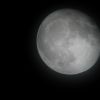
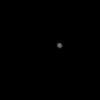
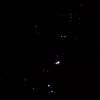
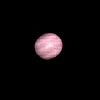
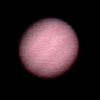
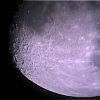
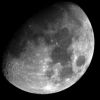
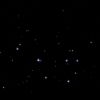
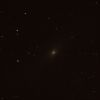
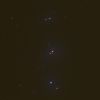
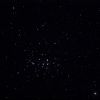

2 Comments
Recommended Comments
Create an account or sign in to comment
You need to be a member in order to leave a comment
Create an account
Sign up for a new account in our community. It's easy!
Register a new accountSign in
Already have an account? Sign in here.
Sign In Now